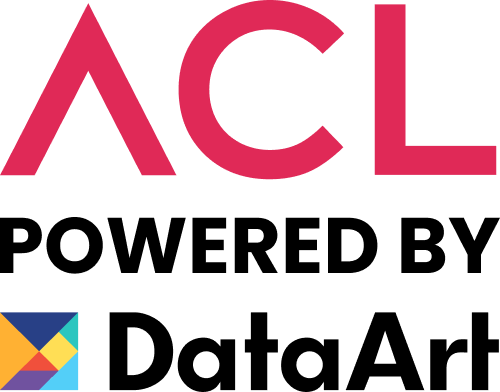Integrating Nearshore Teams: Best Practices for Seamless Remote Collaboration!
With nearshore software development continuing to rise in popularity, bridging the gap between diverse teams has become more crucial than ever. Recent data shows a significant uptick in nearshoring, with companies increasingly turning to Latin American talent. In fact, the nearshore outsourcing market is projected to grow substantially in the next few years, with Latin America playing a key role due to its proximity, cultural alignment, and growing pool of skilled developers. Just in the past year, 87% of IT businesses considered nearshore outsourcing to cut costs.
This article dives deep into the essentials of integrating nearshore teams, mainly focusing on the vibrant talent pool in Latin America. You'll discover the ins and outs of identifying remote developers, establishing effective communication channels, and building a collaborative remote work culture. Managing projects with nearshore teams can be challenging, but it becomes an opportunity for growth and innovation with the right strategies. Whether you're a seasoned business professional or just starting, these insights will equip you with the best practices for fostering a prosperous, cross-border remote collaboration. Get ready to transform the way you work with nearshore teams!
Understanding the Growing Trend of Nearshore Software Development
Understanding the growing trend of nearshore software development requires a deep dive into the current shifts in the global tech landscape. You might wonder why your company should opt for nearshoring, particularly in Latin America, is gaining such traction. It's not just about geographical proximity; it's about finding a sweet spot in quality, cost, and cultural alignment.
A key driver behind this trend is the burgeoning tech talent in Latin America. With a rapidly growing number of STEM graduates, countries like Brazil, Argentina, and Mexico are becoming hotbeds for tech expertise. For instance, Brazil alone produces around 100,000 IT graduates annually, a statistic that reflects the region's deepening talent pool.
But it's not just the numbers that are impressive. The quality of talent in Latin America has caught global attention. Developers here are skilled in modern programming languages and adept at agile methodologies, which are crucial for today's fast-paced tech environment. This proficiency makes them ideal for custom software development projects demanding speed and innovation.
Cost-effectiveness is another significant factor. Nearshoring to Latin America can reduce costs by approximately 30-50% compared to hiring in North America or Western Europe - maximizing IT efficiency. This doesn't mean compromising on quality; rather, it's about leveraging economic differentials to achieve the best of both worlds.
Cultural compatibility plays a vital role, too. Sharing a similar time zone with North American companies means synchronized working hours, facilitating real-time collaboration. This ease of integration is a big plus for businesses looking for agile responses and quick turnarounds.
Moreover, the rise of remote work culture has made nearshoring more feasible than ever. Post-pandemic, companies have become more comfortable managing remote teams, and the infrastructure for remote collaboration has improved dramatically. This shift has opened doors for tapping into Latin American talent without the need for physical relocation.
Overall, the trend towards nearshore software development in Latin America hinges on a unique combination of abundant, high-quality tech talent, cost-effectiveness, cultural alignment, and the global shift towards remote work. It's a strategic move for businesses aiming to stay competitive in a rapidly evolving digital landscape.
The Importance of Seamless Remote Collaboration in Modern Business and Nearshore Software Development
In a world where geographical boundaries are increasingly blurred, the ability to collaborate effectively across distances is pivotal for business success. This is particularly true when integrating nearshore teams from regions like Latin America into your business operations. Understanding the impact of remote collaboration is crucial. A recent study showed that companies that excel at remote collaboration are more likely to see over 30% improvement in productivity. This isn't surprising, considering the efficiency gains from streamlined communication and project management.
For nearshore development, the significance of seamless collaboration is even more pronounced. You're not just dealing with different individuals; you're bridging diverse cultural and professional backgrounds. Hence, creating an environment where communication is clear, and workflows are smooth becomes essential. It's about building a shared understanding and aligning your nearshore team with your business objectives and practices.
Technology plays a critical role here. Utilizing the right collaboration tools can make or break your team's effectiveness. Whether it's project management software, real-time communication platforms, or cloud-based development environments, selecting tools that enhance, rather than hinder, collaboration is key. Remember, it's not just about having the tools; it's about how well your team uses them.
Another crucial aspect is building trust and rapport. When working with nearshore teams, you might not have the luxury of face-to-face interactions, making trust even more crucial. Regular virtual meetings, clear and consistent communication, and an understanding of each team member's role contribute significantly to building this trust. Considering the time zone differences, although smaller with nearshore teams, is vital. Aligning working hours for optimal overlap ensures that your team can collaborate in real-time when necessary, thereby speeding up decision-making and problem-solving processes.
It’s important to remember that seamless remote collaboration in nearshore development is about leveraging technology, fostering trust, and aligning workflows in a way that transcends physical distances. It's about creating a cohesive unit that operates efficiently, regardless of the miles apart. This approach not only boosts productivity but also contributes to a more dynamic, versatile, and resilient business model.
Identifying the Right Nearshore Teams
Identifying the right nearshore teams is a pivotal step in leveraging the full potential of nearshore outsourcing. You're not just looking for a team; you're seeking a partner that aligns with your business's ethos, goals, and work culture. This process goes beyond evaluating technical skills; it involves understanding their ability to integrate seamlessly into your existing operations.
Set Clear Requirements
Start with a clear understanding of your project requirements. What specific skills and technologies are needed? Are you looking for expertise in a particular domain, like fintech or healthcare? This clarity helps in filtering potential nearshore teams that are not just competent but also relevant to your project's needs.
Keep Your LATAM Options Open
Once you've outlined your needs, delve into the talent pool. Latin America, for instance, is known for its robust pool of skilled developers. Countries like Brazil, Argentina, and Mexico have a growing number of tech professionals with a penchant for modern technologies and agile methodologies. Look for teams with a proven track record. Client testimonials, case studies, and portfolios can give you insights into their expertise and experience.
Prioritize a Cultural Fit
Cultural fit is another critical aspect. Nearshore teams from Latin America, for instance, often share a similar cultural ethos with North American companies, which can lead to smoother collaboration. Understanding their work culture, communication style, and approach to problem-solving can provide a glimpse into how well they would mesh with your team.
Pay Attention to Their English Skills
Don't overlook the importance of language skills. While many nearshore professionals in Latin America are proficient in English, varying levels of fluency can impact communication. Ensure that the team you choose has the language skills necessary for clear, effective communication. One great resource to double-check each LATAM country's English levels is the EF EPI Index.
Consider Staff Flexibility
Finally, consider their scalability and flexibility. Can your potential candidates adapt to changing project needs? How do they handle scaling up or down as per the project's requirements? This flexibility is crucial for dynamic business environments.
Posts by Tag
- Programming language (8)
- Framework (6)
- Database management system (5)
- Agility (3)
- Augmentation (3)
- Bilingual developers (2)
- Hiring LATAM talent (2)
- Outsourcing (2)
- Staffing (2)
- Tech (2)
- nearshore software development (2)
- Data Strategy (1)
- Hiring LATAM (1)
- Latin American developers (1)
- Nearshore Software (1)
- Nearshore development (1)
- Ruby (1)
- Staffing Augmentation (1)
- data (1)
Establishing Effective Communication Channels When You Hire LATAM Developers
Establishing effective communication channels is pivotal for the success of nearshore teams. In a scenario where your team is spread across different geographies, the choice and use of communication tools can make a significant difference in project outcomes. Your usual work style might shift a little, and that’s perfectly fine. Your dynamic should evolve to best suit a fully remote team.
The first step is selecting the right tools. With a plethora of options like Slack, Microsoft Teams, Zoom, and Asana, it's essential to choose tools that best fit your team's needs. Consider factors like ease of use, integration capabilities, and features that enhance collaboration. For instance, Slack is excellent for quick communication and integrates well with other tools, while Zoom is ideal for video conferencing and real-time discussions.
Once tools are in place, establish clear communication protocols. Set expectations for response times, and define which channels to use for different types of communication. For example, emails for formal communication, instant messaging for quick queries, and video calls for detailed discussions or team meetings.
Regular check-ins are crucial as well. They keep everyone aligned and provide opportunities for addressing any concerns. These can be daily stand-ups or weekly meetings, depending on the project's pace and complexity. Remember, the goal is to ensure consistent and open communication, not to overwhelm the team with meetings. Try also to encourage an environment where feedback is shared openly and constructively during these meetings. This fosters a culture of continuous improvement and helps in identifying potential issues early on.
Effective communication in nearshore teams is about more than just talking; it's about choosing the right tools, setting clear protocols, regular check-ins, open feedback, respecting time zones, and fostering informal interactions. don't underestimate the power of informal communication. Creating a virtual 'water cooler' space where team members can chat informally helps in building rapport and strengthens team cohesion. This holistic approach ensures that every team member is heard, understood, and engaged.
Building a Collaborative Remote Work Culture With LATAM Developers
Building a collaborative remote work culture is essential in today's business world, especially when working with nearshore teams. A strong remote work culture not only enhances productivity but also ensures team members feel connected and valued, despite the physical distance.
Communicate Your Goals
Start by establishing clear goals and expectations. This clarity helps everyone stay on the same page and work towards common objectives. A Gallup study found that setting clear goals can lead to a 14% increase in productivity, so it’s clear this is a key step towards seamless remote collaboration.
Communicate With Your Remote Developers Often
Promote regular communication while integrating nearshore teams into your company. This doesn't mean flooding inboxes with emails; rather, it's about meaningful interactions. Schedule regular video meetings to discuss project updates, brainstorm, or just catch up. This helps in building relationships and keeps everyone engaged.
Leverage Online Tools
Encourage teamwork and seamless remote collaboration through online tools created for offshore and nearshore teams. Use tools like Google Workspace or Microsoft Teams to facilitate collaborative work. These platforms allow multiple team members to work on documents simultaneously, share ideas, and provide real-time feedback.
Celebrate Your Nearshore Teams
Recognize and celebrate achievements. Acknowledging individual and team successes, even in a virtual setting, boosts morale and fosters a sense of accomplishment. A simple shout-out during a team call or a congratulatory message can make a significant difference.
Foster a Sense of Community
Virtual team-building activities, like online games or happy hours, can help create a more relaxed and connected team environment. According to a Buffer survey, 19% of remote workers state that loneliness is their biggest challenge. Community-building activities can alleviate feelings of isolation.
Encourage Flexibility and Work-life Balance
Recognize the different time zones and personal commitments of team members. Allowing flexible working hours can lead to a 29% increase in worker happiness, as per a FlexJobs survey.
Give Your Nearshore Teams What They Need
Lastly, provide ongoing support and resources. Whether it's technical support, training programs, or mental health resources, ensuring your team has what they need to succeed is crucial.
Managing Projects with Nearshore Teams
Managing projects with nearshore teams presents unique opportunities and challenges. The key is to harness the potential of your team while navigating the complexities of remote collaboration.
Adopt an Agile Approach
Agile methodologies are particularly effective with nearshore teams. They promote flexibility, adaptability, and continuous improvement, all crucial for remote project management. A study by PwC found that Agile projects are 28% more successful than traditional projects.
Manage Your Team With The Help of Tools
Use project management tools effectively. Tools like Jira, Trello, or Asana help in tracking progress, setting deadlines, and assigning tasks. They provide a centralized platform for all project-related information, making it easier for everyone to stay updated.
Communicate Clearly and Frequently
Regular updates and check-ins are vital. They help in identifying and addressing issues early, thus preventing project delays. According to PMI, ineffective communication is the primary cause of project failure one-third of the time.
Aim for SMART Objectives
Set realistic deadlines and milestones. Consider the time zone differences and the capacity of your team while setting timelines. Unrealistic deadlines can lead to burnout and impact the quality of work.
Encourage Team Autonomy
Empowering your nearshore team to make decisions and take ownership of their work fosters a sense of responsibility and can lead to more innovative solutions. A Harvard Business Review study found that autonomy can increase job satisfaction and team productivity.
Regularly Review and Adjust Your Strategies.
Project management with nearshore teams is not a set-and-forget process. It requires ongoing assessment and adaptation to ensure alignment with project goals and team well-being.
Hire LATAM Developers For Seamless Remote Collaboration With ACL’s Staff Augmentation Services

Are you ready to elevate your project with top-tier LATAM developers? You can experience the ease of seamless remote collaboration with ACL's Staff Augmentation Services. Our long-standing record in delivering high-quality software solutions and deep understanding of the unique needs and challenges associated with nearshore projects makes us a reliable partner for your software development needs. Our team of skilled professionals is equipped to handle complex projects, ensuring that we deliver innovative, efficient, and cost-effective solutions. Choose ACL for an IT outsourcing partnership that combines experience, trust, and cutting-edge technology in nearshore software development. Get started today and transform your development journey by scheduling a free discovery call!

.png)




